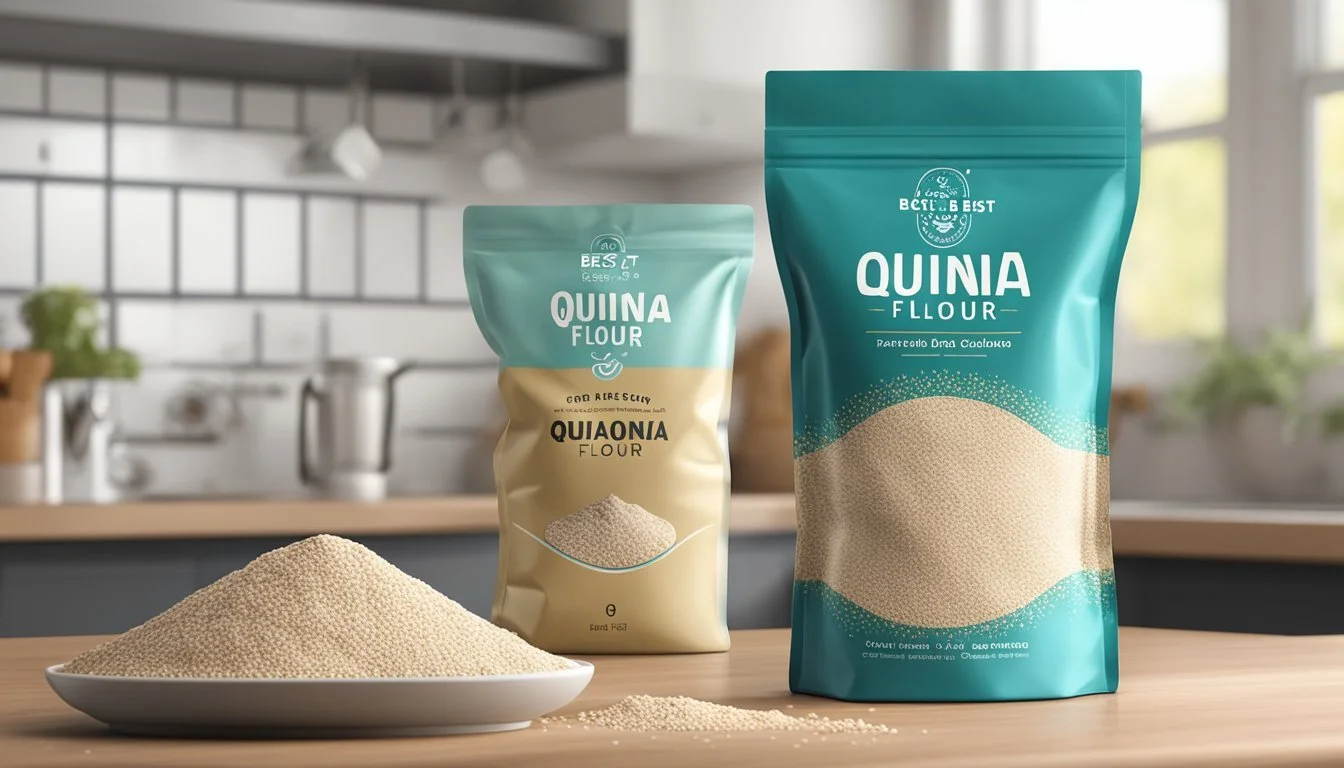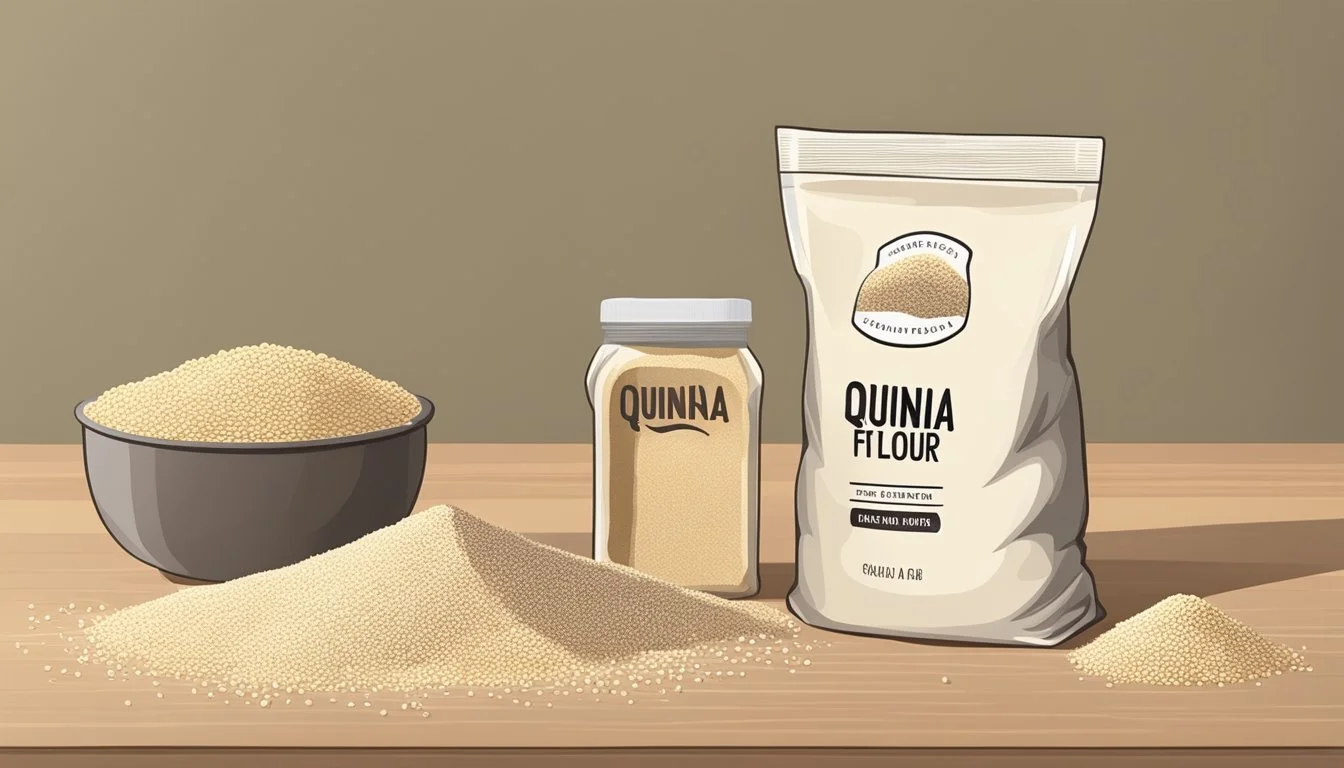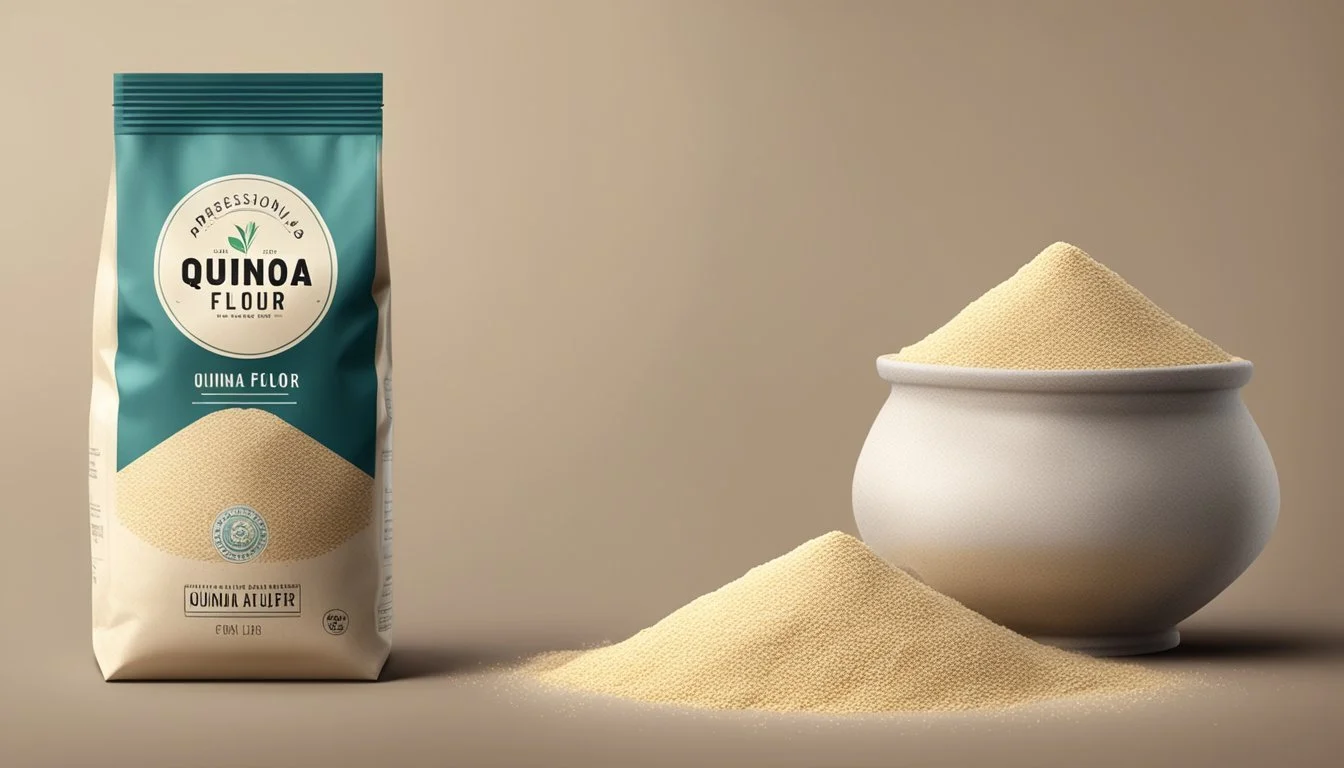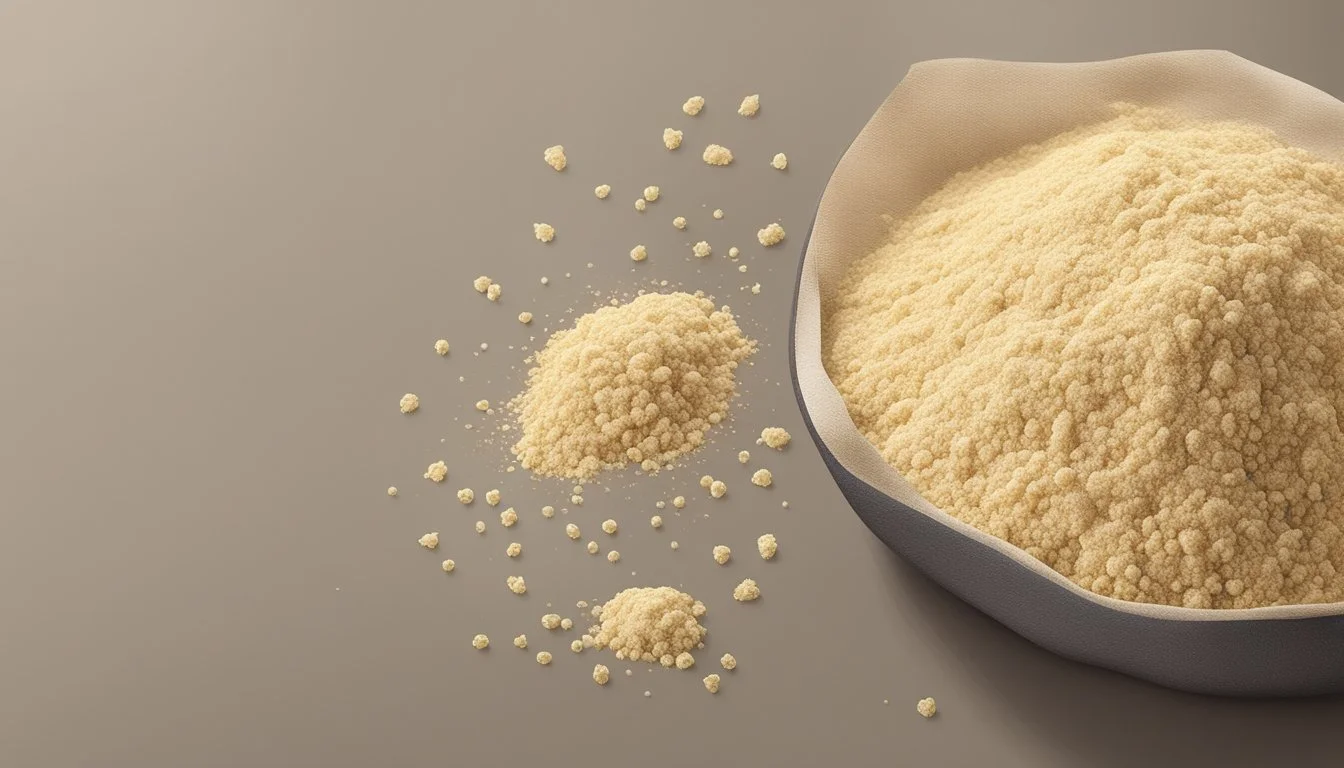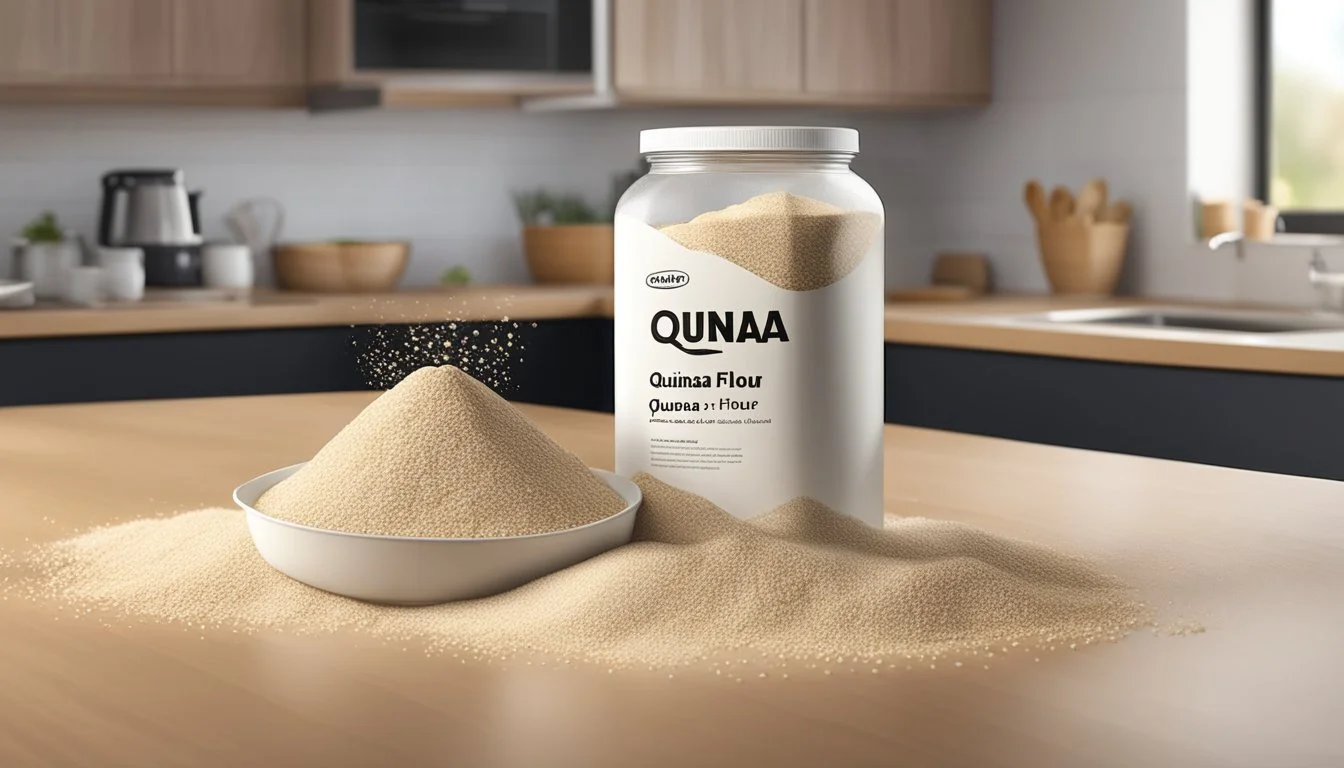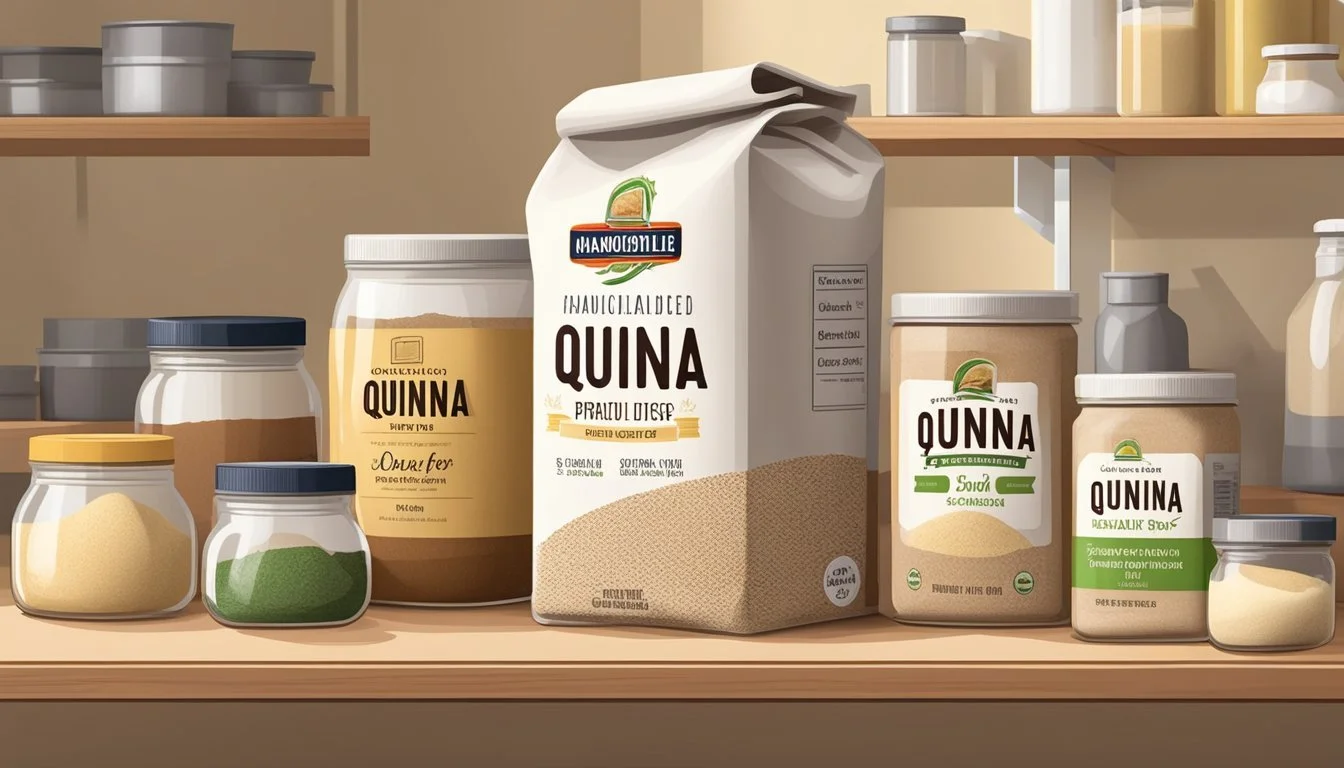Does Quinoa Flour Go Bad?
Shelf Life and Storage Tips
Quinoa flour is a popular choice for health-conscious bakers and those seeking gluten-free alternatives. Yes, quinoa flour can go bad if not stored properly. Since it contains higher fat and protein content compared to other flours, it is more susceptible to spoilage.
To ensure the longevity of quinoa flour, it is crucial to store it in a cool, dry place. Unopened packs can last 6-12 months, while opened packs should be sealed tightly and refrigerated or frozen to maintain freshness.
Exposure to moisture and heat can deteriorate the quality of quinoa flour. Mold growth, off smells, or a change in taste are clear indicators that the flour has gone bad and should not be consumed.
Understanding Quinoa
Quinoa is a versatile superfood prized for its high nutritional value and various beneficial properties. It offers a robust nutritional profile and comes in different varieties, each with unique characteristics.
Nutritional Profile
Quinoa is rich in protein, making it an excellent option for those seeking plant-based protein sources. It contains all nine essential amino acids, which are crucial for muscle repair and growth. A key point is its high fiber content, which aids digestive health and helps maintain a feeling of fullness.
Vitamins and minerals found in quinoa include iron, magnesium, and B-vitamins. Iron supports healthy oxygen transport in the blood, while magnesium contributes to muscle and nerve function. The presence of antioxidants helps combat oxidative stress, promoting overall health.
Varieties of Quinoa
Quinoa is available in several varieties, notably white, red, and black quinoa. White quinoa has a mild flavor and soft texture, making it suitable for a variety of dishes. Red quinoa is slightly chewier and has a nuttier flavor, often preferred in salads for its ability to hold shape.
Black quinoa has an earthy taste and firm texture, adding visual appeal and nutritional diversity to meals. Each variety offers similar nutritional benefits but differs in taste, texture, and culinary application.
Storing Quinoa
Proper storage techniques are essential to maintaining quinoa's freshness and nutritional value. Key factors include temperature, packaging, and moisture control.
Ideal Storage Conditions
Quinoa should be stored in a cool, dry place, away from direct sunlight. Room temperature environments are usually adequate for maintaining quinoa's quality, but cooler temperatures extend its shelf life.
Humidity control is crucial, as excess moisture can lead to mold growth. Airtight containers are recommended to prevent air and moisture infiltration, which can degrade the grains. For long-term storage, keeping quinoa at a temperature below 5 degrees Celsius (41°F) can prevent nutrient loss and rancidity.
Packaging and Containers
The choice of packaging significantly impacts quinoa's longevity. Using airtight containers such as mason jars or Mylar bags with oxygen absorbers can help maintain an oxygen-free environment. Moisture-proof bags are also beneficial to protect the quinoa from humidity.
Moreover, it's advisable to label the containers with the packaging date for easy tracking. Re-sealable bags and zipper storage bags are convenient for frequent use, but they should still be stored in a dry place to avoid moisture content that can spoil the quinoa.
Freezing Quinoa
For extended storage needs, freezing is the most effective method. Quinoa should be placed in airtight containers or vacuum-sealed bags to prevent freezer burn. This method can keep the grains fresh for up to 12 months.
Cooked quinoa can also be frozen for future use. It's best to cool the quinoa completely before packing it in airtight containers. Spreading the cooked quinoa on a baking sheet to freeze it individually before transferring to containers can help prevent clumping, making it easier to portion later. Storage labels indicating the freezing date help keep track of the storage duration.
The Shelf Life of Quinoa
Quinoa has varying shelf lives depending on whether it is uncooked, cooked, or in flour form. Proper storage methods significantly impact its longevity and quality.
Uncooked Quinoa
Uncooked quinoa seeds can last for an extended period when stored properly. When kept in a cool, dry place, uncooked quinoa can stay fresh for 2 to 3 years. Storing them in an airtight container helps protect the seeds from moisture and pests.
Refrigeration is not necessary for unopened packages but can extend the shelf life of opened quinoa. Always check for signs of spoilage such as an off-smell or visible mold.
Cooked Quinoa
Cooked quinoa has a relatively short shelf life compared to its uncooked form. It can be safely stored in the refrigerator for up to 5 to 7 days when kept in an airtight container. Label the container with the date to keep track of its freshness.
For longer storage, cooked quinoa can be frozen. In the freezer, it can last for up to 6 to 8 months. Always ensure it is stored in a freezer-safe bag or airtight container to prevent freezer burn.
Quinoa Flour
Quinoa flour, when stored correctly, has a shorter shelf life than whole quinoa seeds. In the pantry, quinoa flour can last for about 3 months. For improved freshness, it is best to refrigerate it, which extends its shelf life to up to 6 months.
For even longer storage, freeze quinoa flour, ensuring it is in an airtight container to prevent moisture and odors from affecting its quality. Always look out for signs of moisture, such as clumping or a sour smell, which indicate spoilage.
Signs of Spoilage
Detecting spoilage in quinoa flour involves closely observing various signs through visual checks and using your senses. Key spoilage indicators include mold, discoloration, and changes in texture or smell.
Visual Indicators
Mold Growth: Mold is a clear sign of spoilage. If you see any patches of mold on the quinoa flour, discard it immediately.
Discoloration: Fresh quinoa flour should have a consistent color. Look for any dark spots or unusual color changes, which could indicate spoilage.
Texture: Spoiled quinoa flour might have a clumpy or moist texture. If it feels different from its usual fine, dry state, it may have absorbed moisture, affecting its quality.
Check your quinoa flour regularly, as these visual cues are essential for ensuring it remains safe to use. Using your senses and being vigilant can prevent potential health risks associated with consuming spoiled flour.Factors Influencing Spoilage
Quinoa flour is susceptible to various environmental and storage conditions that can accelerate spoilage, reducing its shelf life and nutritional value. Below, key factors are broken down to help understand how to best preserve quinoa flour.
Environmental Factors
Environmental conditions like light, heat, and humidity play a significant role in the spoilage of quinoa flour. Exposure to light can degrade the flour's nutrients, making it less effective. Similarly, heat sources such as direct sunlight or a warm room can speed up the spoilage process. Humidity is another critical factor, as moisture can lead to mold and bacterial growth, posing risks of foodborne illnesses. Pests can also be attracted to improperly stored quinoa flour, causing contamination.
Storage Practices
Proper storage practices are essential to keep quinoa flour fresh. Sealed containers that are airtight help to minimize exposure to oxygen, which can lead to oxidation and spoilage. Refrigerating or freezing quinoa flour can extend its shelf life by slowing down the growth of bacteria and fungi. It's also advised to store the flour in a cool, dark place to avoid heat and light exposure. Consistent temperature is crucial in preventing the product from deteriorating quickly.
Hygiene and Handling
Hygiene and handling practices directly influence the flour’s shelf life and quality. Always use clean, dry utensils to scoop the flour to avoid introducing moisture, which can lead to bacterial growth and spoilage. Transfer quinoa flour into airtight containers soon after opening the package to prevent contamination from the environment. Additionally, labeling the containers with the date of storage can help track the freshness and ensure timely use, thereby reducing waste and health risks from expired products.
Proper attention to these factors can significantly extend the usability of quinoa flour and maintain its nutritional integrity.
Maintaining Freshness and Quality
Ensuring quinoa flour stays fresh and maintains quality involves appropriate storage techniques and effective rotational use of the product. Proper measures help in preserving its nutritional value and safety for consumption.
Proper Storage Techniques
Quinoa flour should be stored in a cool, dry place to maintain its freshness. Unopened packs can last for 6-12 months. Once opened, transferring quinoa flour to an airtight container is essential to prevent moisture and contamination.
Refrigeration or freezing is advised for extended shelf life. In the refrigerator, it should be stored in a sealed container to avoid absorption of other food odors and moisture. Freezing can keep quinoa flour usable for a longer period, but always ensure it is well-sealed to prevent ice crystal formation and freezer burn.
Storing quinoa flour away from light also helps maintain its nutritional content, as exposure to light can degrade quality over time. Utilizing dark, opaque containers or storing it in a dark pantry can be highly beneficial.
Rotational Use
Implementing a rotational use system is key to maintaining the quality of quinoa flour. Label each container with the date of purchase and ensure the oldest flour is used first. This method, known as First In, First Out (FIFO), helps reduce waste and ensures consistent freshness.
Regularly checking the quinoa flour for any signs of spoilage, such as changes in odor, color, or the presence of mold, is crucial. If any spoilage indicators are observed, it should be discarded immediately to prevent contamination and health risks.
Keeping smaller, manageable quantities on hand can also contribute to better quality maintenance, as it minimizes the timeframe in which the flour might go stale or spoil.
Health Considerations of Expired Quinoa
Quinoa flour can become a health risk if it is consumed past its prime. Bacteria can grow on spoiled quinoa, potentially leading to foodborne illnesses. When quinoa flour is expired, it may contain harmful microorganisms that could cause digestive issues.
Potential Risks:
Mold and Bacterial Growth: Expired quinoa flour can develop mold or bacteria, which can result in foodborne illnesses.
Toxins: Some bacteria produce toxins that are not destroyed by cooking, posing significant health risks.
Signs of Spoilage:
Sour or Off Smell: A rancid or sour smell is a clear indicator of spoilage.
Discoloration: Any unusual coloration, such as yellow or green spots, suggests the flour has gone bad.
Texture Changes: If the quinoa flour has clumped or has a different texture, it may be spoiled.
Food Safety Tips:
Storage: To minimize health risks, store quinoa flour in an airtight container in a cool, dry place.
Shelf Life: Unopened quinoa flour typically lasts 6-12 months. Once opened, it should be used within 3-6 months for best quality.
Consumption:
Avoid Eating Expired Flour: To prevent health issues, it's best to avoid consuming quinoa flour beyond its expiration date.
Regular Checks: Frequently check stored quinoa flour for signs of spoilage.
Keeping these pointers in mind can help ensure that expired quinoa flour does not pose a threat to health and food safety.

